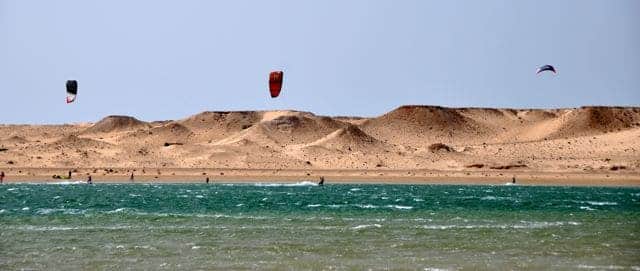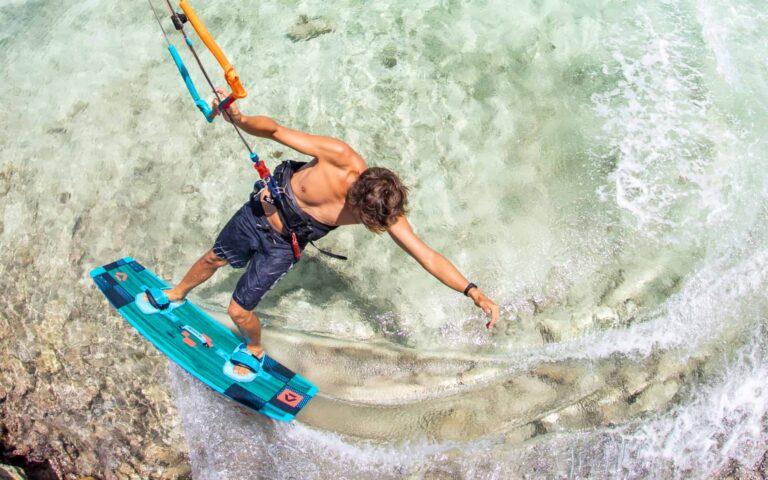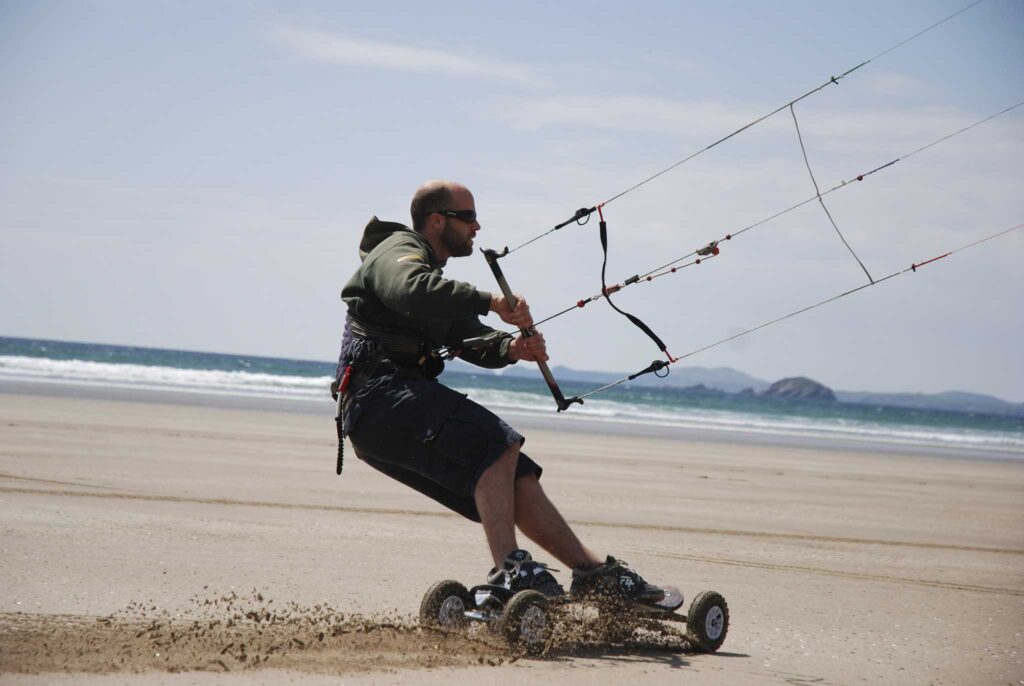Table of Content
Your kite bar is the essential piece of equipment, it not only allows you to control direction and power while kiteboarding, but it is also designed to enable you to get rid of unwanted power so that you can avoid danger and regain control in critical situations in and out of the water.
In this article, we will cover basic kite control theory, the 3-step safety system, and how to check your kite bar to make sure it is in good condition and its safety systems will work when you need them.

How your kitesurf bar controls your kite
Your kitesurf bar has four lines and therefore four points of attachment for you to affect and control the kite. The two lines which run from the each end of the bar are known as your steering or rear lines. These connect to the line attachment points at the wing tip and pulling on either of them will steer the kite in the direction you pull.
Two inner lines, known as front or power lines, split above the bar and connect to the leading edge bridle attachment points. This lines support the majority of the force in the kite but do not affect direction.
Your bar may have a 5th line. This useful page by Duotone covers a range of bar options from 4 to 5 line, chicken loop sizes and bar widths so you can understand which set up is most useful to you.

You are attached to your bar by your chicken loop which is held in place by a locking tube (also known as donkey dick or safety finger) to prevent accidentally unhooking the bar while riding. The chicken loop allows the rider to take the power of the kite into their harness and enables the rider to control power by sheeting the bar in and out to affect the kites angle of attack.
If the rider let go of the kite, the rider would not lose the kite as their chicken loop is still attached.
Your bar can pushed away from you or pulled towards you along the de-power line (also known as throw line), each action will affect the kites steering ability and power. With the bar pulled in towards you, you will be pulling on each wingtip and pulling the trailing edge of the kite to be at a closer angle to the wind. This increased angle of attack will result in an increase in power and the increased steering line tension will make the kite more responsive and easier to turn.
With the bar pushed further away from you, you will have less power and slower steering as the steering lines have less tension and the kite will have a reduced angle of attack.
Kitesurfing 3 step safety system
There are three steps that a kiter can take to get out of trouble and regain personal safety when kiting. Depending on the severity of the incident, performing one step might be enough, or you may be required to act further through steps two and three.
Step 1: Let go of your kite bar (let the kite fall)
Step 2: Activate the kite bars quick release (the kite should ‘flag out’ on its safety line and stop generating power)
Step 3: Eject kite safety leash (if step 2 has failed)
#1 Let go of the bar
As discussed in the basic control theory above, when your bar moves away from you along the throw line, the kites angle of attack is reduced resulting in less power in the kite.
The first action of letting go of the bar allows the bar to move to the end of the throw reducing power and allowing the kite to crash into the water.
If this has been enough to safely resolve the situation, you would be able to check your lines aren’t twisted and resume by relaunching the kite.
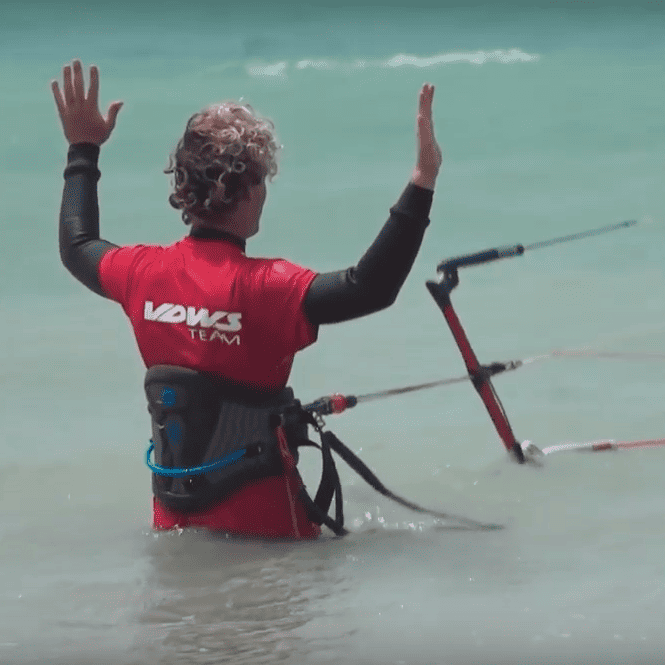
#2 Activate the quick release
Directly above/built into your chicken loop is your quick release. This on a modern bar is typically a push away release which breaks open the chicken loop allowing it to detach from the harness spreader bar. Alternatively, your bar may have a twist release* or a pull release if it is very old.

If letting go of your bar has not been sufficient to end your troubles, your quick release must be used. Once used your kite should flag out giving you near to total loss of power. The kite is still attached to you via your kite leash but the bar is far out of reach and the tension is resting on only one front line while the other three lines are slack. The kite will be resting on the water with one wing tip upwind if this has been successful. In deep water you will still drift downwind as the wind pushes into the side of the kite.
From this point you would be able to perform a self rescue and deepwater pack down and return to shore.
*Since writing this, the Global Kitesports Association have announced the long awaited introduction of ISO standardisation of quick release safety systems. The new ISO 21853 overrules national standards such as AFNOR. Tested in a range of wet, dry and sandy conditions any quick release that passes ISO 21853 must meet the standard for maximum release force (equal to or less than 170N) and opening time (equal to or less than 2 seconds).
This is the start of a regulated industry standard and should finally see the end of the twist release. If all brands use the same mechanism, all users will have the same automatic response leaving less chance for error.
#3 Eject the kite leash
If you have activated the quick release and the kite is still moving, generating power and forcefully pulling you, your quick release has failed. This tends to happen as a result of overly twisted front lines preventing the bar from moving up a single line. It may move 1.5meters away from you, become stuck and cause the kite to loop**.
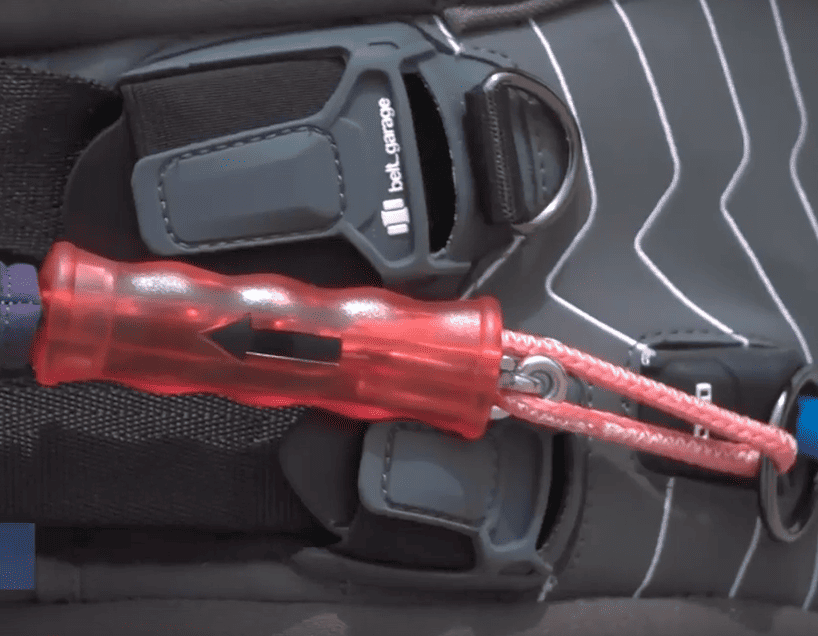
If your safety system has failed, you will need to use the eject on your kite leash to detach the kite from you entirely. This is a 100% loss of power from the kite and the kite will fly/drift away from you. It is important that your safety eject on your kite leash is accessible the moment you need it. Leashes fastened behind backs are nearly always impossible to reach and activate when the situation demands it. A leash fastened in front or on your hip can be reached easily and used when needed.
A kite that is no longer attached to you is now a greater risk to other people downwind of you. For this reason, the choice to use it should not be taken lightly. Only release the kite in its entirety if you are facing serious injury or death.
** When you are kiting, always check your front lines aren’t twisted. 3 twists can be enough to stop your safety system from working. You bar will have a line untwisted either above the chicken loop or at the split on the front lines.
Always check your kitesurfing 3-step safety system is working
Your leash and bar need to be washed in fresh water after every session. This will give them a longer life and ensure there is no sand preventing the effective use of the safety mechanism. To wash them properly, open each release and dunk them in fresh water. You can then reset them for storage.
At the start of each session, check your kite leash is functional and your chicken loop opens easy when the quick release is activated. Check the bar is moving easily up the safety line and that it is not sticking at any point. If any of these checks do not produce a successful result, resolve them before you go on the water.
Kitesurf bar common wear points
Your bars flag out (safety) line is the most common point of wear on any bar. Depending on brand, your bars flag out line may run internally through the PU coated throw line, or it may run externally. Internal flag out lines have constant protection from friction as you use your bar and tend to wear less than external flag out lines which will wear quicker.
Keep a keen eye on your safety line and watch for weakening from friction.
Main Points
1. Know the 3 safety steps well.
2. Check your bar and lines for any damage frequently.
3. Test the Kite bar and the Leash release by ejecting them before every session.
4. Practice Self Rescue & deepwater Pack Down technique at least a few times a year.






